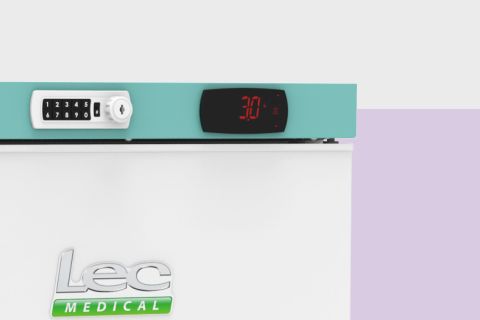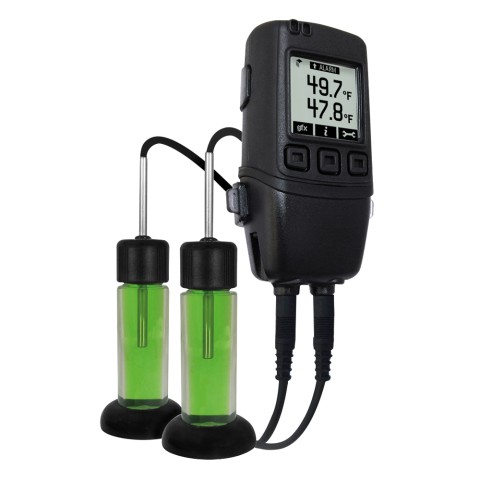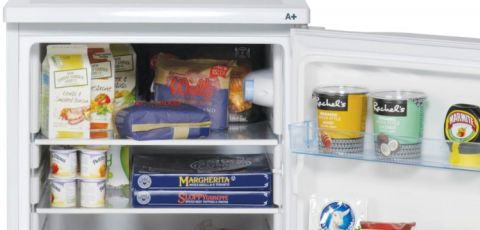
Initial Setup
Thank you for choosing Lec Medical.
To help you get started, this page offers quick tips for setting up your appliance for the first time - ensuring safe installation and optimal performance from day one.
For full setup instructions and support, please visit our user manual page.
Un-pack carefully
- Remove all packaging from the appliance
- Please note that tape is used to hold shelves in place during transportation.
- Depending on the model, the packaging may include items such as keys, fuses, door handles, screws, and screw cap covers.
- Please check carefully and retain all components - do not discard them
Allow to settle
- Before moving your appliance into position in its final location
Let the unit stand upright for at least 24 hours before switching it on. This allows time for the refrigerant gas to settle following transportation.
Position correctly
- Ensure that the appliance is positioned in a dry, well-ventilated area, away from heat sources, and avoiding areas of high humidity and direct sunlight.
- To provide sufficient ventilation, please allow at least 10cm horizontal clearance at each side, 7.5cm horizontal clearance at the rear and 5 cm vertical clearance at the top.
Fridge must be positioned out of direct sunlight, so therefore away from any window.
Always position your fridge away from a heat source, such as a radiator.
Always position your fridge on a level floor surface with adequate air circulation.
Always ensure your fridge has a 10cm gap around and above it for good air circulation.
Level the appliance
- Place the appliance on a solid level surface. Adjust the levelling feet on the appliance as required to ensure that the appliance is level (fig.1)
- For larger models (242L, 310L, 312L, and 394L), ensure the third foot is fully raised before adjusting the levelling feet. Once levelled, unscrew the third foot until it touches the floor (fig.2)
(fig.1)
(fig.2)
Battery back-up fuse (Pharmacy plus & Neonatal models only)
- Two fuses are included in the packaging inside the unit (Fig.3)
- Insert one fuse into the fuse holder at the back of the top cover of the appliance.
- This system allows the appliance to monitor and record temperature data during a power cut.
- If the fuse is not inserted, the controller will display error code ‘bAt’ after a while. (Not applicable to Laboratory models).
(fig.3)
(fig.3)
Clean the interior
- Wipe the inside of the appliance with a soft cloth dampened in lukewarm water and mild detergent. Rinse using a wrung-out cloth with clean lukewarm water, then dry thoroughly.
Power on & initial cooling
- After switching on the appliance, let it run empty for at least 24 hours to allow time for it to get down to temperature before filling with stock.
- Please note that, until the appliance reaches its dedicated temperature range, the high-temperature alarm will sound approximately every 10-15 minutes.
- This is normal and indicates that the appliance is cooling down but has not yet reached its operating temperature
- Simply silence the alarm by pressing the relevant key on the controller. [Link to the user manuals page].
Stocking the appliance
- Once the appliance has reached its operating temperature, it can be loaded with stock.
- Take care not to overload the appliance, ensuring items are not packed too closely together, and are not touching the back wall or floor of the fridge or blocking the circulation fan.
- Ensure that products with the earliest expiry date are placed at the front to be used first. Stock the appliance as quickly as possible, closing the door as soon as possible.
After restocking the appliance and closing the door, check the current temperature on the appliance after 10 minutes to ensure that the unit is cooling down and running satisfactorily.
The MHRA recommends that you stock the refrigerator no more than 75% capacity to achieve optimum performance.
Only store medical items in your vaccine fridge. Never store food in your vaccine fridge – this has its own specific temperature storage range.
Always leave a 1cm gap between your vaccines wherever possible to ensure the best air circulation.
Always restock your fridge as quickly as possible. When the door is open, warmer air can enter the appliance.
Always ensure your fridge is kept clean both inside and around the door seal.
Never allow vaccines to be in contact with the back or sides of the unit, which could result in freezing rendering the vaccines useless.
Do not stack vaccines above the fan, which could block or restrict the airflow around the unit.
Never take your daily minimum/maximum readings just after restocking your fridge, so always plan your restocking around your min/max routine.
Temperature monitoring
- It is important for you to familiarise yourself for recording and resetting the minimum and maximum temperatures. Refer to the user manual or quick start guide here




